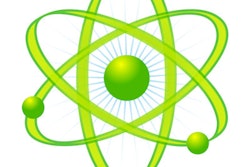
A perfect storm is brewing in the global SPECT market that could see the prices of SPECT radiopharmaceuticals skyrocket over the next five years. A number of factors are coalescing that could lead to a shortage of SPECT tracers for years to come. This article examines the current and future challenges facing the SPECT market -- and, more broadly, the nuclear medicine market -- in the U.S.
New attention has been focused on the radiotracer supply issue following the October 31 shutdown of molybdenum production at a nuclear reactor operated by Canadian Nuclear Laboratories (CNL) in Chalk River, Ontario, Canada. While the site halted molybdenum-99 (Mo-99) production, CNL said it would maintain the reactor on standby in case of emergencies until March 2018.
Molybdenum is a precursor to the key SPECT radiopharmaceutical technetium-99m, which is used in more than 80% of nuclear medicine procedures. The end of Mo-99 production at the Chalk River facility will almost certainly lead to constrained supplies -- the only question is how severe.
But the nuclear medicine industry has been struggling for years with supply issues related to the Chalk River facility -- and yet still hasn't developed alternative supply sources capable of replacing it. Described below are some of the issues that have complicated the development of real solutions.
Forces in play
The precarious nature of the radioisotope supply has won the attention of numerous professional and governmental groups, such as the Nuclear Energy Agency (NEA) at the Organization for Economic Cooperation and Development (OECD). The NEA established the High-Level Group on the Security of Supply of Medical Radioisotopes (HLG-MR) in 2009. In 2011, it implemented a series of practical measures to ensure the reliable and sustained supply of Mo-99 and Tc-99m.
This decision was triggered by a series of factors, namely the difficulties in molybdenum supply during the 2009-2010 shortage, as well as the high levels of taxpayer subsidies going to the nuclear reactors that produce isotopes. The OECD-NEA noted that the current Mo-99 pricing model was not economically sustainable to support much-needed infrastructure upgrades and to pay operating costs.
Any discussion of the radioisotope market would be remiss without explaining two key concepts: full cost recovery (FCR) pricing and outage reserve capacity (ORC). In essence, full cost recovery pricing means that the price of a radioisotope should be set at a level that will enable producers throughout the supply chain to recoup the costs of production. This hasn't happened in the market for medical radioisotopes, due to extensive taxpayer subsidies for the nuclear reactors that produce isotopes.
Outage reserve capacity refers to the need for isotope producers to maintain enough reserve production capacity to fill the need for radioisotopes if a major source goes offline, as did the Chalk River reactor during the 2009-2010 crisis.
Full cost recovery would require governments to stop subsidizing nuclear reactors for the production of medical radiopharmaceuticals. In theory, the increase in fixed costs would be recuperated by increased SPECT procedure costs and therefore higher reimbursement payouts. Unfortunately, this clashes with the transition of the U.S. healthcare system away from a fee-for-service model.
Initially, FCR pricing for radioisotopes was anticipated to be implemented by June 2014; in the HLG-MR's final report, published in July 2016, the review found FCR pricing implementation to be occurring gradually, yet at different speeds and not at all locations.
Government subsidies have begun to recede for radioisotope production, but implementation continues to be alarmingly slow; despite the HLG-MR, only 11 countries having committed to this initiative. With dark clouds looming on the horizon, the longer it takes to implement the new pricing strategy, the more volatile pricing will become.
Given the powerful influence of group purchasing organizations (GPOs) on the market and their rising bargaining power, it remains to be seen how strongly GPOs would tolerate a spike in radioisotope pricing. Furthermore, for nuclear pharmacies locked into existing supply contracts, a move toward FCR pricing almost surely guarantees a negative profit margin should radiotracer prices increase significantly in a given year.
Shift away from HEU
Another major development in the radiopharmaceutical market is the shift away from using highly enriched uranium (HEU) as a source material and toward low-enriched uranium. The U.S. and some other countries have ceased exporting HEU over security concerns about the theft and proliferation of nuclear material.
The major players have agreed to transition away from HEU to LEU for the majority of medical radiopharmaceutical production. By 2020, it is expected that the world's reactors will be operating with strictly LEU fuel and plates, and all Tc-99m radioisotopes used in the U.S. will be derived from LEU sources, as mandated by the American Medical Isotopes Production Act (AMIPA).
But there are issues with LEU-based production as well. LEU nuclear reactors utilize less than 20% of the amount of uranium-235 compared with HEU nuclear reactors. That translates into roughly five times less product and five times more waste for LEU sources, a cumbersome load given the dearth of waste storage and waste management facilities.
The added waste problem may be circumvented, however, by protocol changes -- namely, changes to solvent material concentration or reaction volume, and by converting waste products to solid by precipitation, evaporation, or calcination. In theory, this would facilitate easier waste disposal because volume has been reduced.
Currently, only two of the world's commercial nuclear reactors use LEU to produce Mo-99, one in South Africa and one in Australia, although all nuclear reactors except one are transitioning at varying speeds.
Effect of rising costs
Rising costs such as those involved in the conversion to LEU sources are felt more profoundly in the latter half of the supply chain, predominantly in nuclear pharmacies. Full cost recovery pricing is driving up the cost of raw materials, whereas GPOs -- as previously discussed -- continually gain bargaining power. The added costs associated with transitioning to LEU-based production make it nearly impossible to operate profitably, and likely explain the low penetration of LEU-derived radioisotopes in the U.S.
In response, the U.S. government has added a reimbursement code for procedures that use LEU-derived radioisotopes; the U.S. Centers for Medicare and Medicaid Services (CMS) will pay out roughly $10 as both an incentive and cost-recovery measure. At the time of writing, private payors have yet to adopt the $10 add-on payment.
Central to this problem, however, is that the $10 payment is made to hospitals and not to nuclear pharmacies that purchase the radioisotope generators. And there is ample debate about whether $10 is even enough as a cost-recovery measure.
Higher prices?
The logical response, of course, is to increase prices for LEU-derived radioisotopes. However, a number of factors are preventing this from happening. As a consequence, it makes little economic sense for nuclear pharmacies to aggressively transition to LEU production, and a more ubiquitous transition will likely require legislative pressure -- stricter and more rapid enforcement of AMIPA, for example. This likely explains why currently only about 25 out of 30,000 Tc-99 doses administered per day are receiving the additional $10 payment.
The relatively slow adaptation of market players to the legislative forces at work could drive a sudden increase in SPECT radiopharmaceutical pricing. Full cost recovery pricing measures will affect LEU implementation and drive radiotracer prices higher over the next few years.
Compounding the problem is a lack of dedication to isotope production projects from relevant stakeholders across the supply chain. Partial subsidization is still ongoing for nuclear reactors, HEU-derived radioisotopes make up the bulk of supply, and CMS and private payors haven't done an adequate job at incentivizing change.
Paradoxically, early-mover advantage is a disadvantage in the U.S. market since it would lead to loss of market shares, with the exception of a few large players. The picture gets even more convoluted when considering the current status of outage reserve capacity requirements.
Tomorrow: The impact of Trump's election and capitation models on radiopharmaceutical pricing.
Giananthony Rizzo is an analyst on the Medical Device Insights team at Decision Resources Group. His main areas of focus are global capital equipment markets and contrast agent and radiopharmaceutical markets. Giananthony holds a Master of Science degree with a specific focus on molecular biology and targeted therapy for head and neck cancer, and a Bachelor of Science degree in medical sciences from the University of Western Ontario. For follow-up questions or inquiries, please contact him at [email protected].
The comments and observations expressed are those of the author and do not necessarily reflect the opinions of AuntMinnie.com.



















